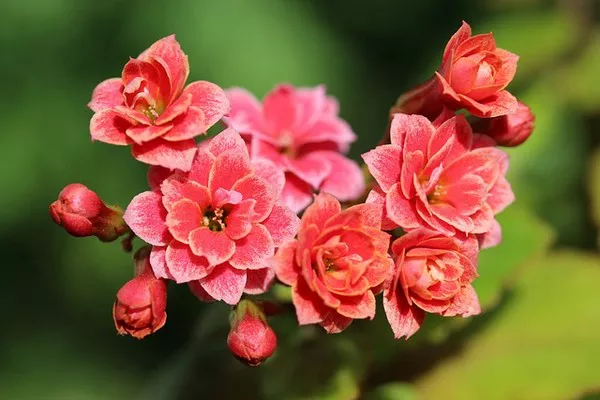Succulents have become increasingly popular in recent years, and for good reason. Their stunning, diverse appearances, low-maintenance requirements, and ability to thrive in various conditions make them a favorite choice among plant enthusiasts. One of the essential aspects of succulent care is potting. Proper potting not only enhances their beauty but also ensures their health and longevity. In this comprehensive guide, we will delve into the art of potting succulents, covering everything from choosing the right pot to the best soil mix and essential care tips.
1. Selecting the Right Pot:
Choosing the right pot is the first crucial step in potting succulents. Consider these factors:
Material: Succulent pots come in various materials, including clay, ceramic, plastic, and wood. Clay and ceramic pots are breathable, allowing excess moisture to evaporate, but they may require more frequent watering. Plastic and wood pots retain moisture better but may lead to overwatering if not managed carefully.
Size: Opt for a pot that provides ample space for your succulent’s roots. However, it should not be too large, as excess soil can retain moisture, potentially causing root rot.
Drainage Holes: Ensure the pot has drainage holes at the bottom to prevent water from accumulating and causing root rot. If your favorite pot lacks drainage, you can drill holes or use it as an outer decorative container.
2. Preparing Your Succulent:
Before potting your succulent, take the following steps:
Repotting: If your succulent is already in a pot, gently remove it and shake off excess soil. Inspect the roots for any signs of rot or disease and trim if necessary.
Propagation: If you’re propagating succulents, allow the cuttings to callus for a few days. This reduces the risk of rot when repotting.
3. Choosing the Right Soil Mix:
Succulents require well-draining soil to prevent root rot. You can purchase a cactus or succulent potting mix, or you can create your own by mixing equal parts of standard potting soil, perlite, and coarse sand. The perlite and sand help improve drainage while ensuring your succulents receive the right balance of moisture and air.
4. The Potting Process:
Here’s a step-by-step guide to potting your succulents:
Fill the Pot: Fill your chosen pot with the succulent soil mix, leaving enough space to accommodate the root ball of your succulent.
Create a Hole: Make a hole in the center of the soil mix with your finger or a stick. The hole should be deep enough to accommodate the root system without crowding.
Place the Succulent: Gently place the succulent into the hole, ensuring the roots are spread out naturally. Fill the hole with more soil mix, pressing it down gently to secure the plant in place.
Level the Soil: Make sure the soil is level and reaches the base of the succulent. Leave a small gap between the soil surface and the rim of the pot for watering.
5. Watering and Maintenance:
Proper watering and maintenance are vital for your potted succulents’ health:
Watering: Allow the soil to dry out completely between watering. Stick your finger about an inch into the soil; if it feels dry, it’s time to water. Water thoroughly until you see excess water drain from the pot’s bottom. Always empty the saucer underneath to prevent root rot.
Light: Succulents thrive in bright, indirect light. Place them near a window with filtered sunlight. If growing indoors, provide them with at least six hours of sunlight per day.
Temperature: Succulents prefer temperatures between 60°F to 80°F (15°C to 27°C). Avoid exposing them to frost or extreme heat.
Fertilizing: During the growing season (spring and summer), feed your succulents with a balanced, water-soluble fertilizer diluted to half strength. Avoid fertilizing during the dormant winter months.
Pruning: Remove dead or wilted leaves regularly to promote new growth and maintain the plant’s aesthetics.
6. Dealing with Common Issues:
Even with proper care, succulents can face issues such as pests or diseases. Here’s how to address them:
Pests: Common pests include mealybugs, aphids, and spider mites. Use a gentle spray of water or insecticidal soap to remove them. Isolate infected plants to prevent the issue from spreading.
Diseases: Overwatering can lead to root rot, while underwatering can cause shriveling and wilting. Adjust your watering routine accordingly. If you notice signs of disease, such as black spots or mushy stems, remove affected parts with sterilized tools.
7. Repotting:
As your succulent grows, it may outgrow its current pot. Signs that it’s time to repot include roots emerging from the drainage holes or overcrowding in the pot. Repot your succulent into a slightly larger container using the same potting mix and following the steps mentioned earlier.
In conclusion
potting succulents is a rewarding and straightforward process when done correctly. By selecting the right pot, using a well-draining soil mix, and following essential care guidelines, you can enjoy healthy, thriving succulents that enhance the beauty of your indoor or outdoor space. With a little attention to detail, your succulents will continue to flourish and delight for years to come.


